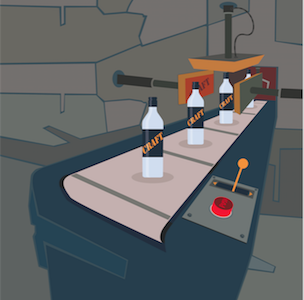We live in a time when the augmented form has become the norm. When the cheapest fuel at the petrol station is premium and when you can’t find a boozer that isn’t a gastro-pub. The same is true of the spirits industry, where ‘handcrafted’ (and all its derivatives) has become perfectly ordinary.
Just as ‘deluxe’ is old fashioned and bling super-premiums now seem passé, craft descriptors – at least if they continue to be commercialised to within an inch of their definitions – will one day soon have their day.
Craft spirits started with worthy intentions. Legitimately small-scale businesses (let’s just say those that count in bottles not 9-litre cases) distilling spirits themselves. Handcrafted was not factory-automated, it was approximate rather than consistent, and sometimes it wasn’t very good. But it was, nonetheless, what the average person might reasonably expect from the description.
In the slipstream of craft beer, craft spirits had a ready market. Consumers understood the pitch (‘support the local little guys; it’s about passion not profits’) – indeed it became a lifestyle choice, a badge of discerning consuming. With craft beer’s rise in the US acting as semaphore, big business couldn’t ignore the signals. Marketing departments likely clasped for the dictionary – as we all have – and thought: “Our business makes things with skill.”
Indeed, many big brands’ distilling knowhow goes back centuries – their execution of distillation precise and consistent. But handcrafted? Well, control panels need hands. Justifying the small-scale connotation of craft is slightly more tricky. A million-plus case brand can’t disguise its size. Cue small-batch limited editions – but from the same mega-distillery that created the millions of cases of standard spirit (or should that be premium?).
Did you know about ‘the craft of Bacardi and the ‘craftsmanship’ of Bombay Sapphire? That Absolut vodka is “crafted with Swedish winter wheat”? Well it’s just a Google search away. None claim to be craft spirits per se, but the inference is there. In the US, Jim Beam and Maker’s Mark recently won lawsuits in which it was alleged the marketing of their whiskies as handcrafted and handmade respectively is misleading. And Tito’s Handmade Vodka has faced ever-rumbling litigation, with courts discussing the type of still and its mechanisation as indicators of handmade. Tito’s has so far been successful in court but ‘small-batch’ has now been examined in the latest round of federal hearings.
In the US there are also guidelines as to craft. According to the American Distilling Institute ‘certified craft spirits’ are “products of an independently-owned distillery with maximum annual sales of 52,000 cases where the product is physically distilled and bottled on-site”. The ADI adds that no more than 25% of the company can be owned by a party who is not the distiller and, to further paraphrase, there must be “hands-on production” and the label must say who it is distilled by.




